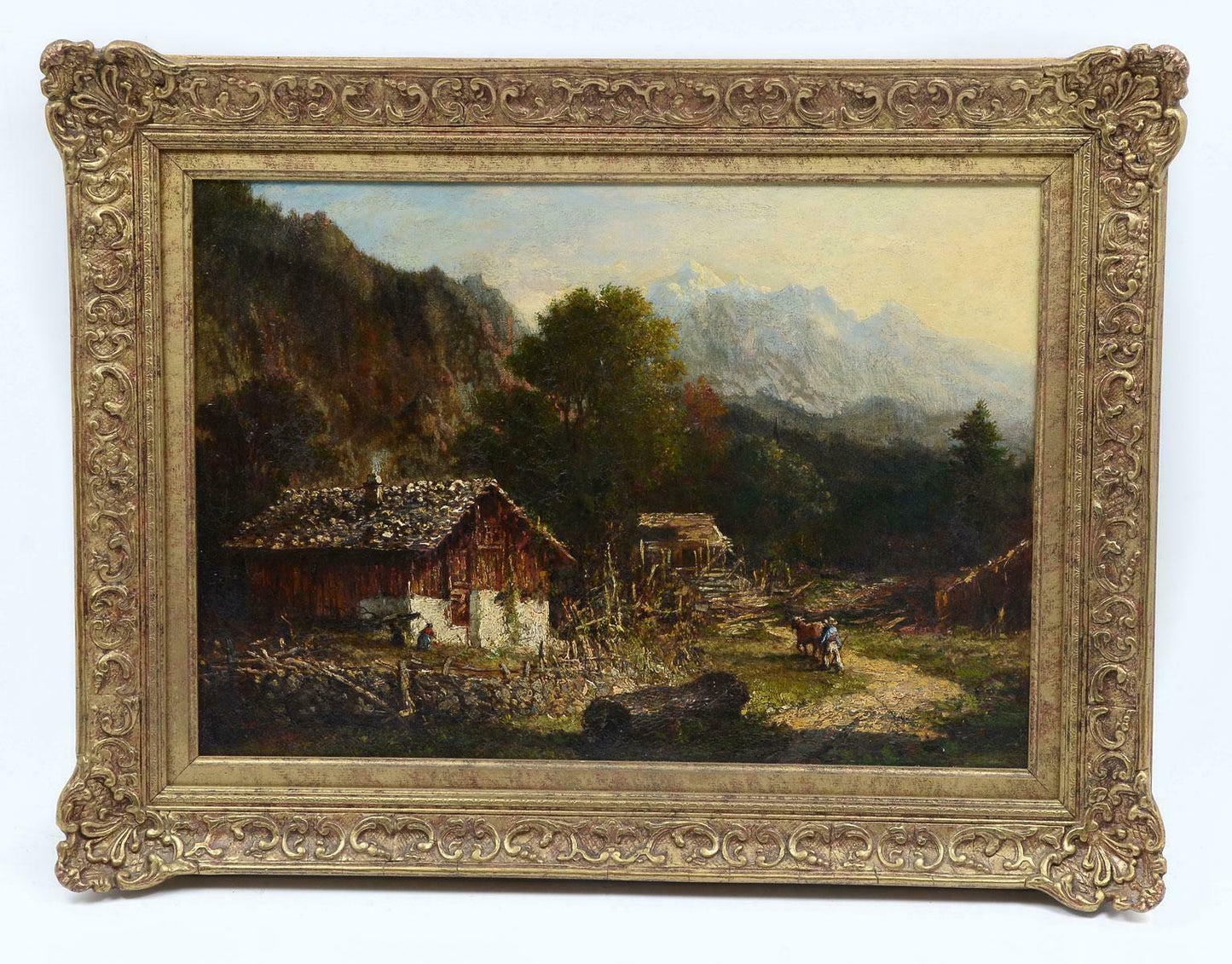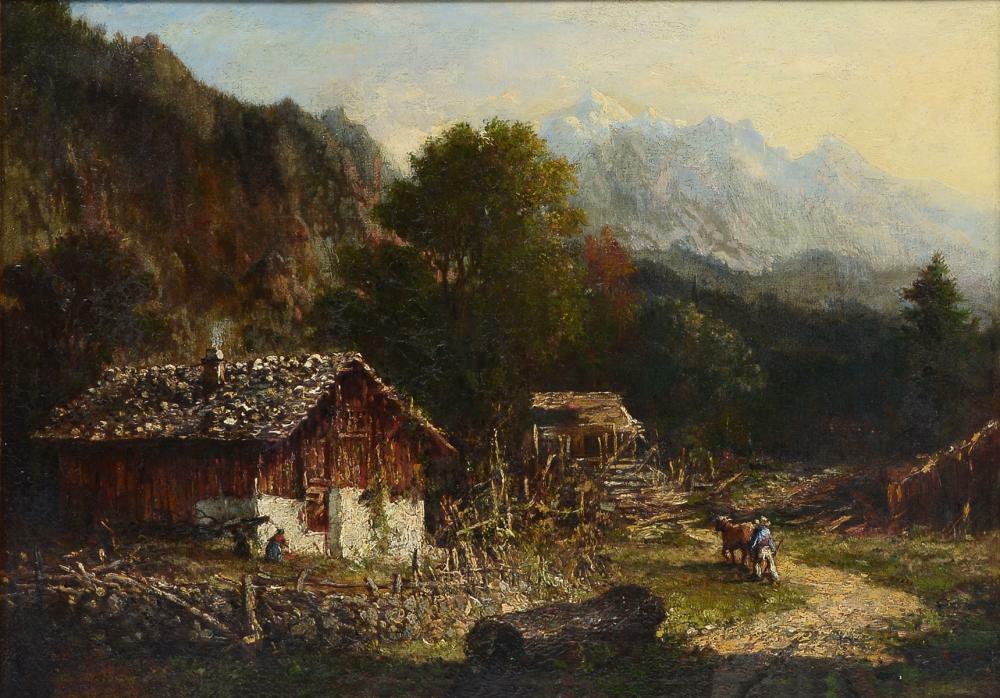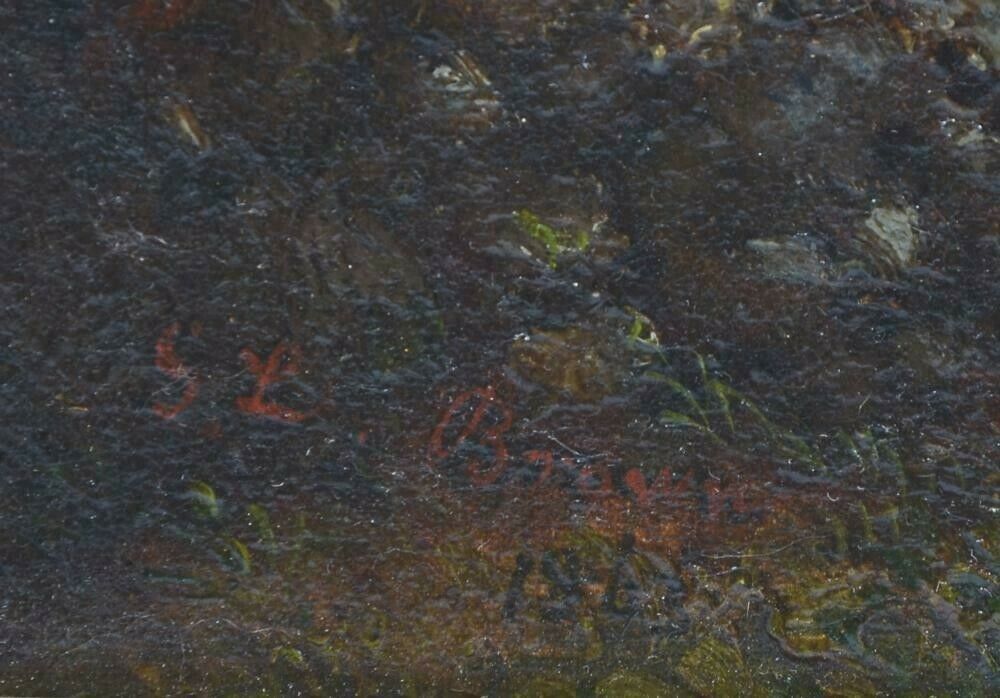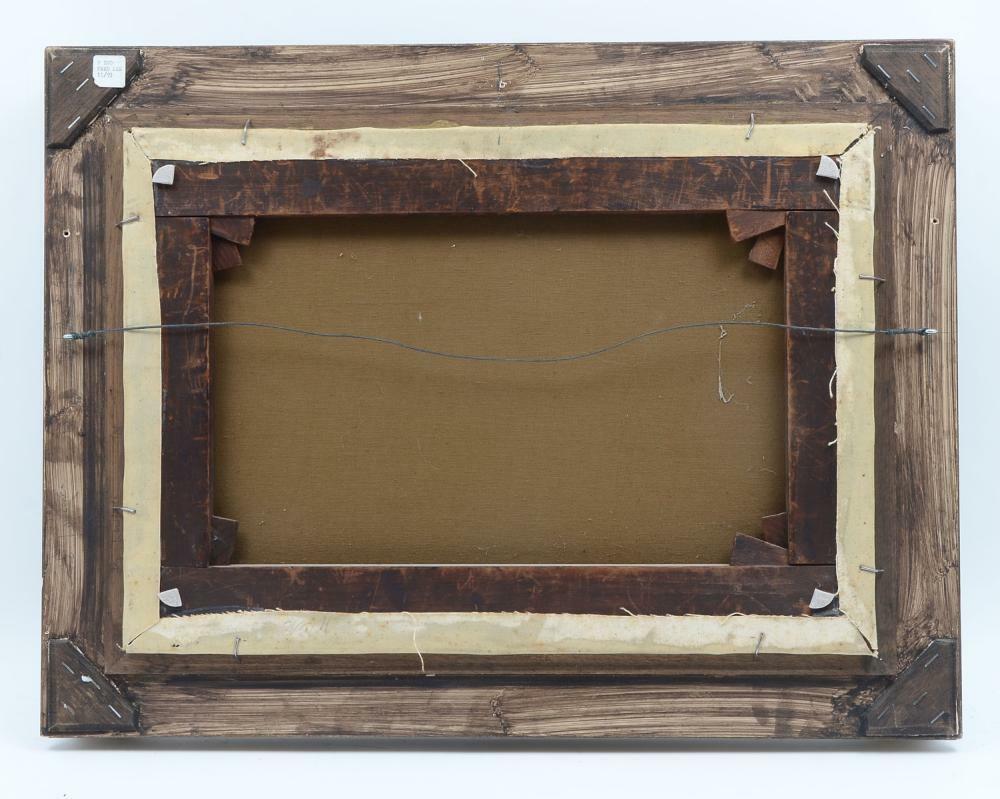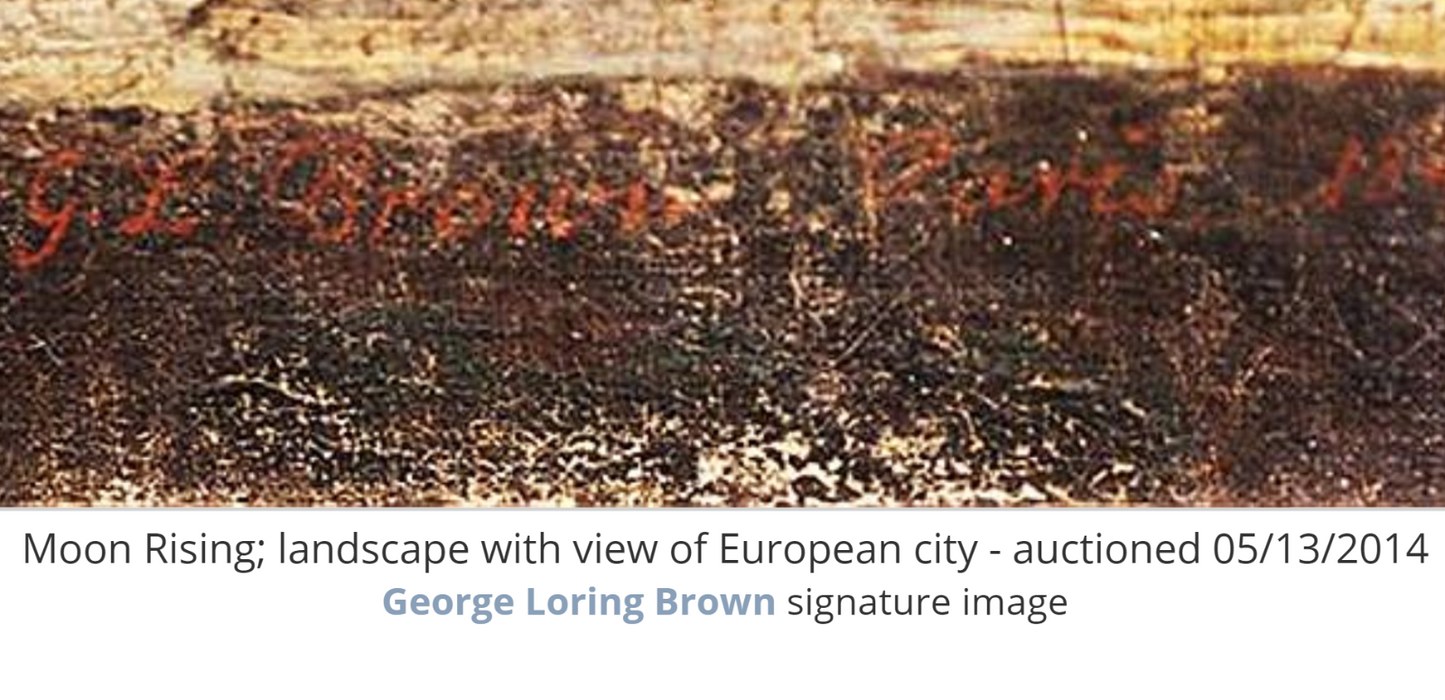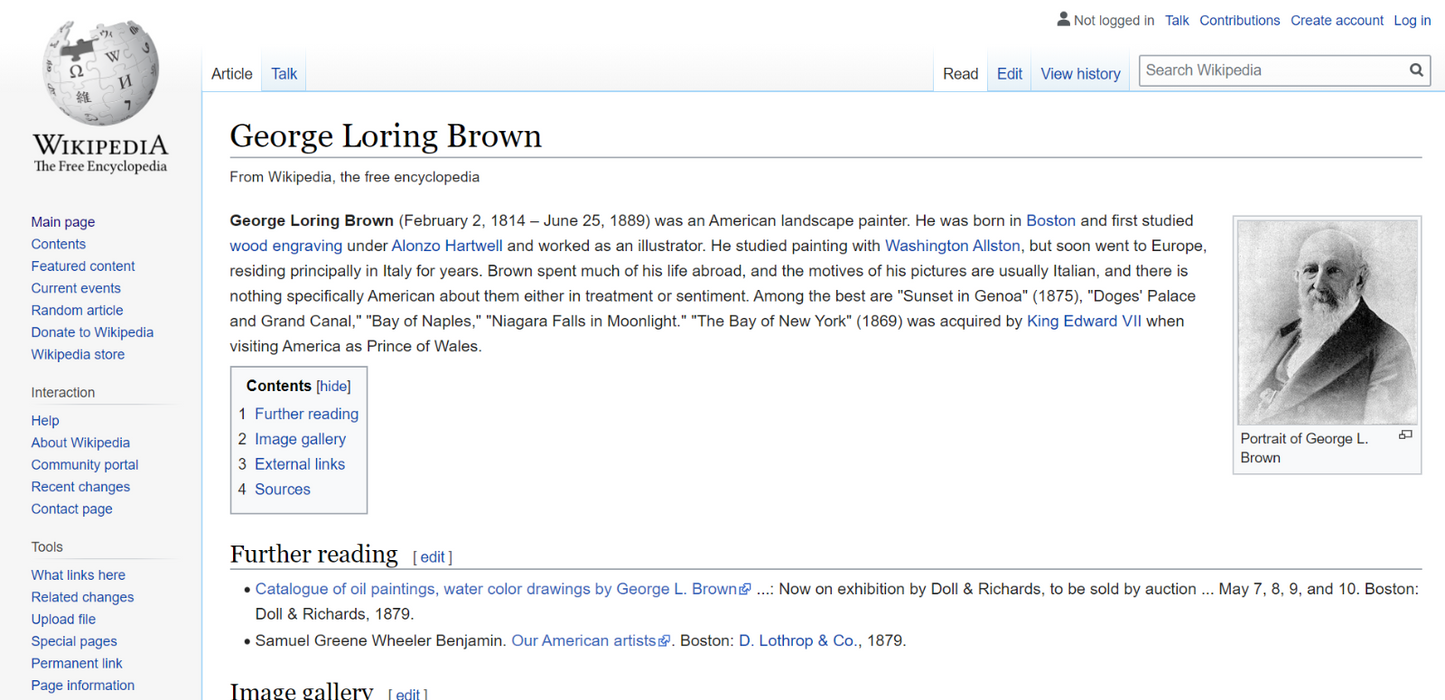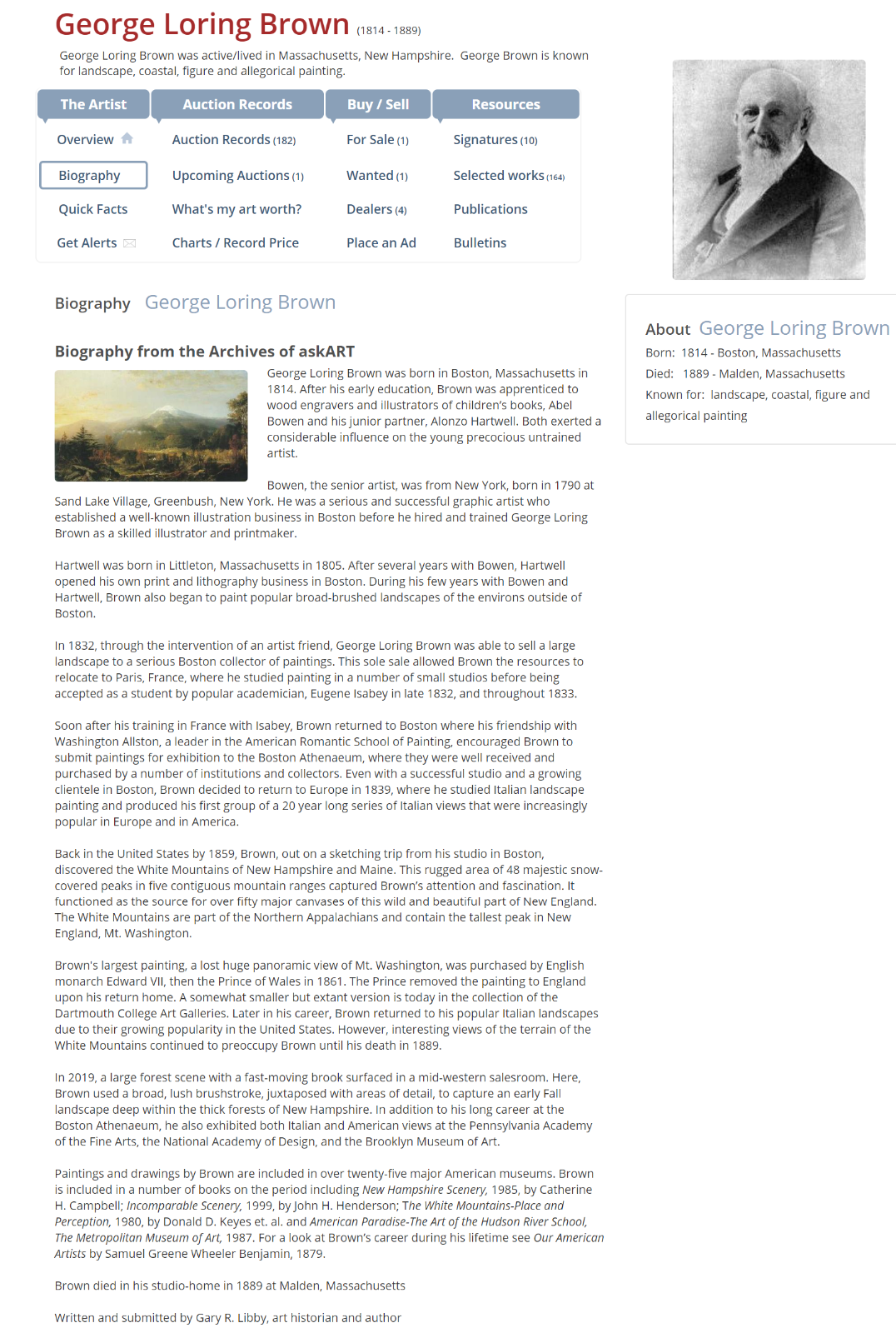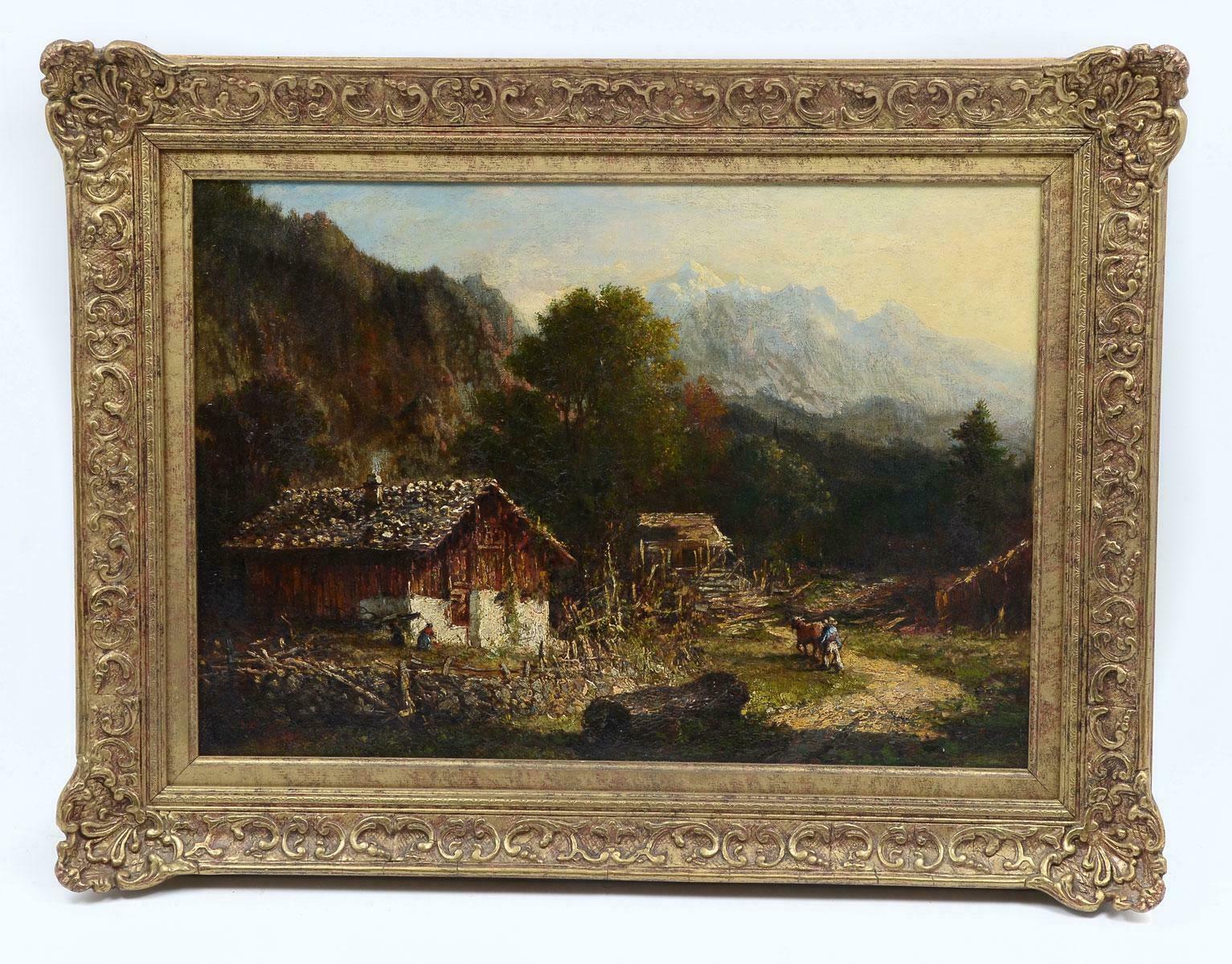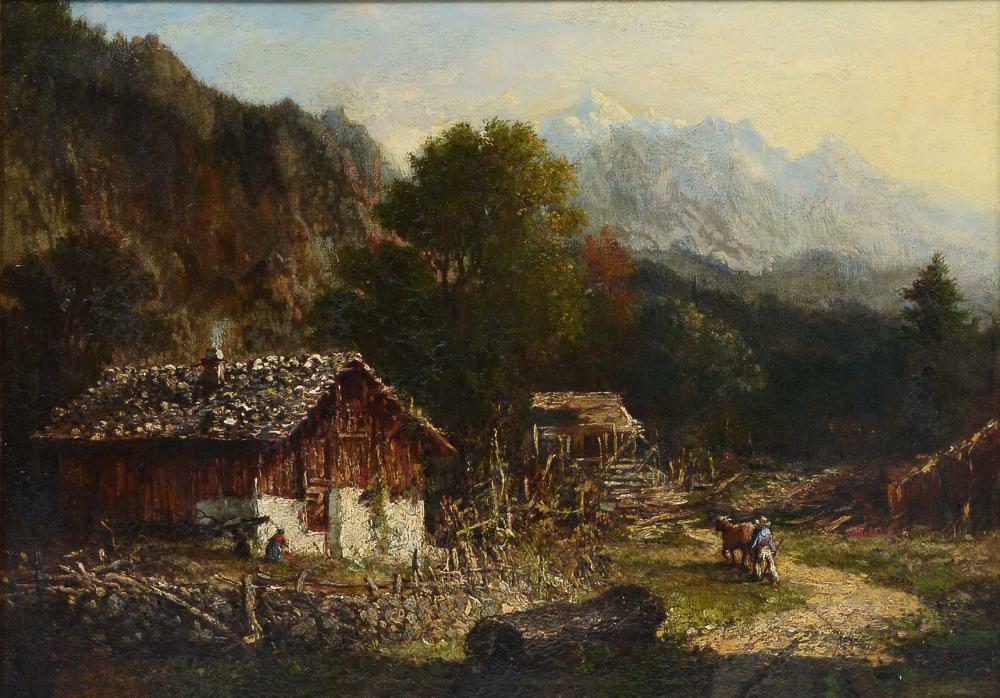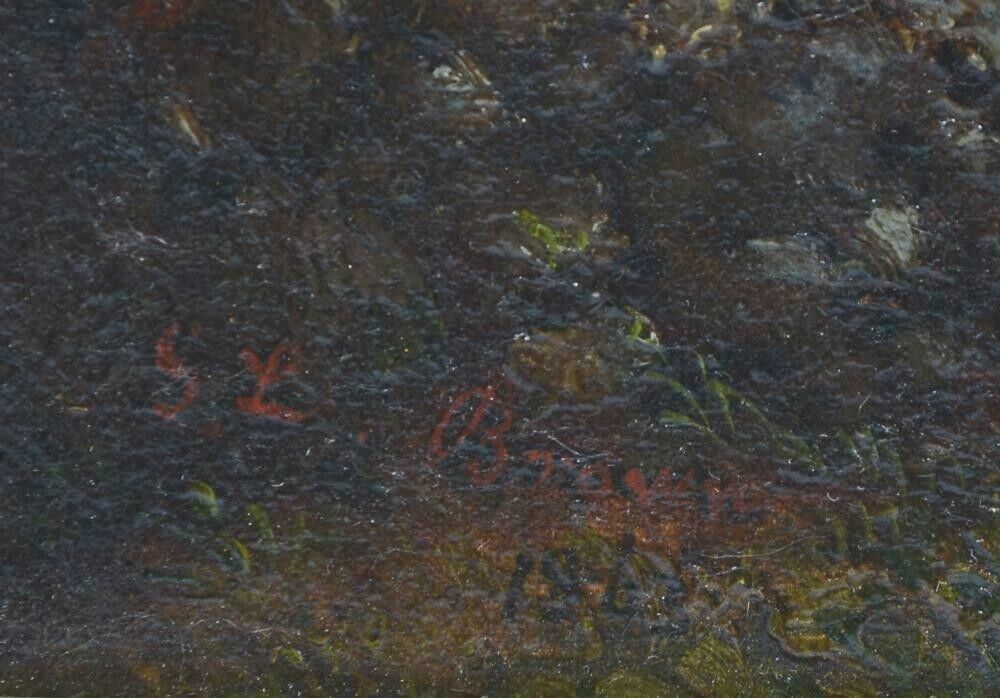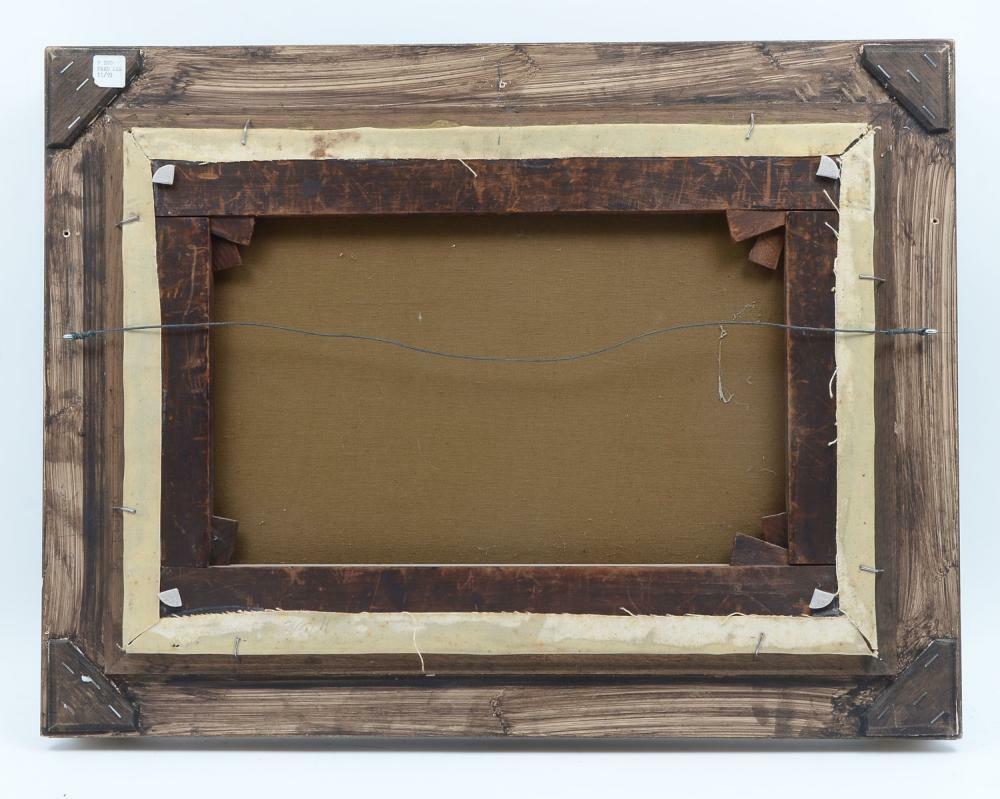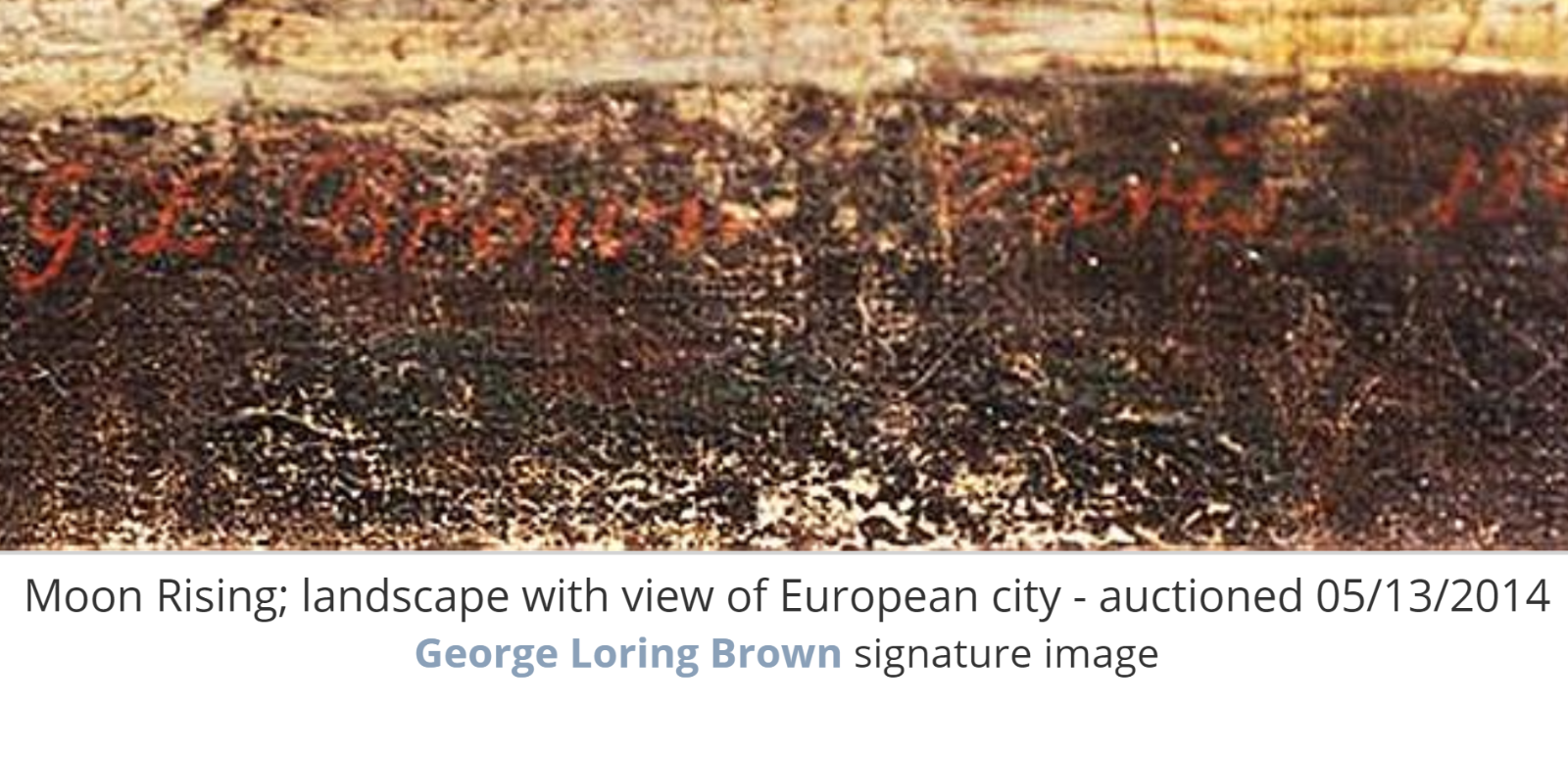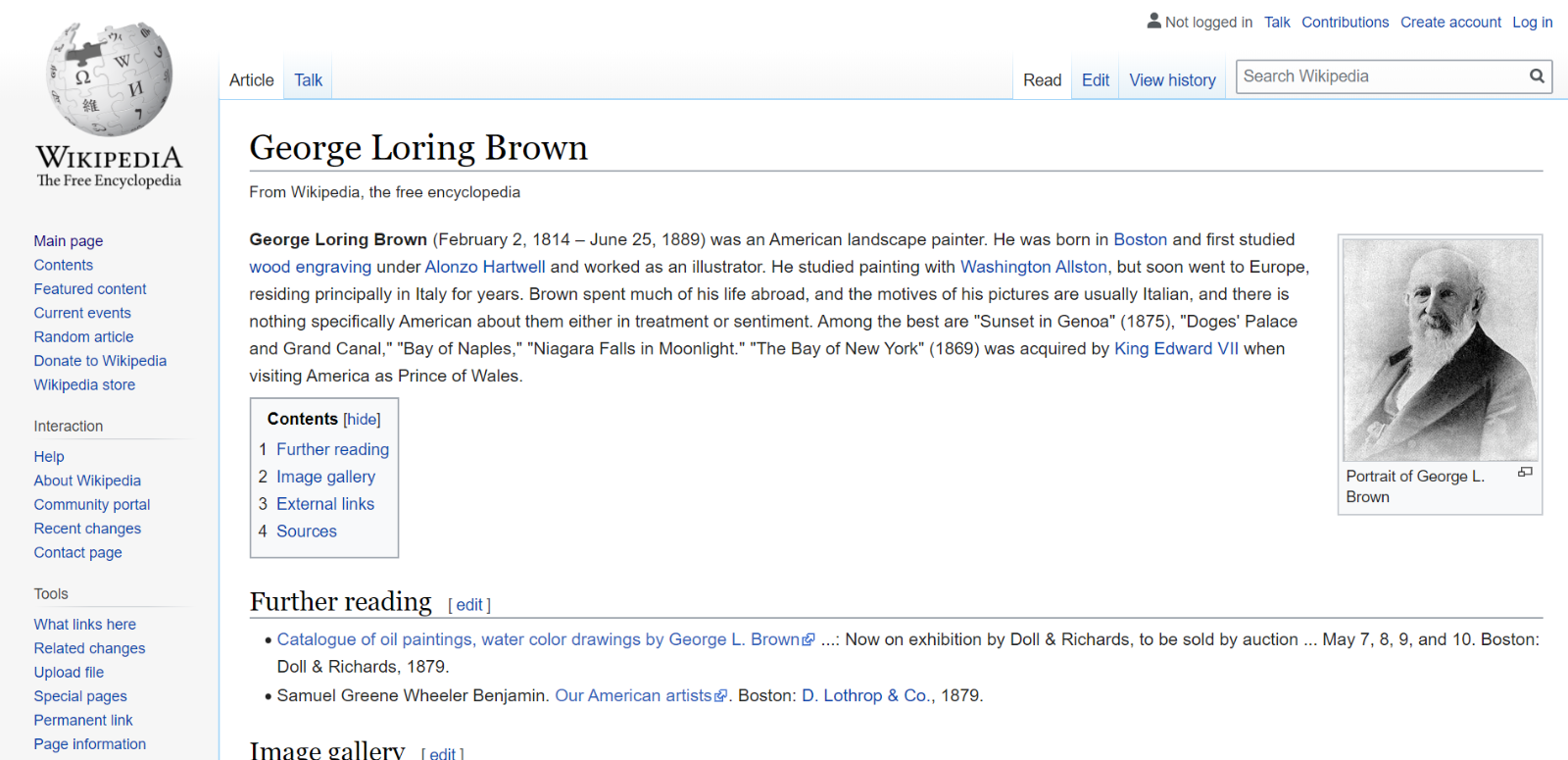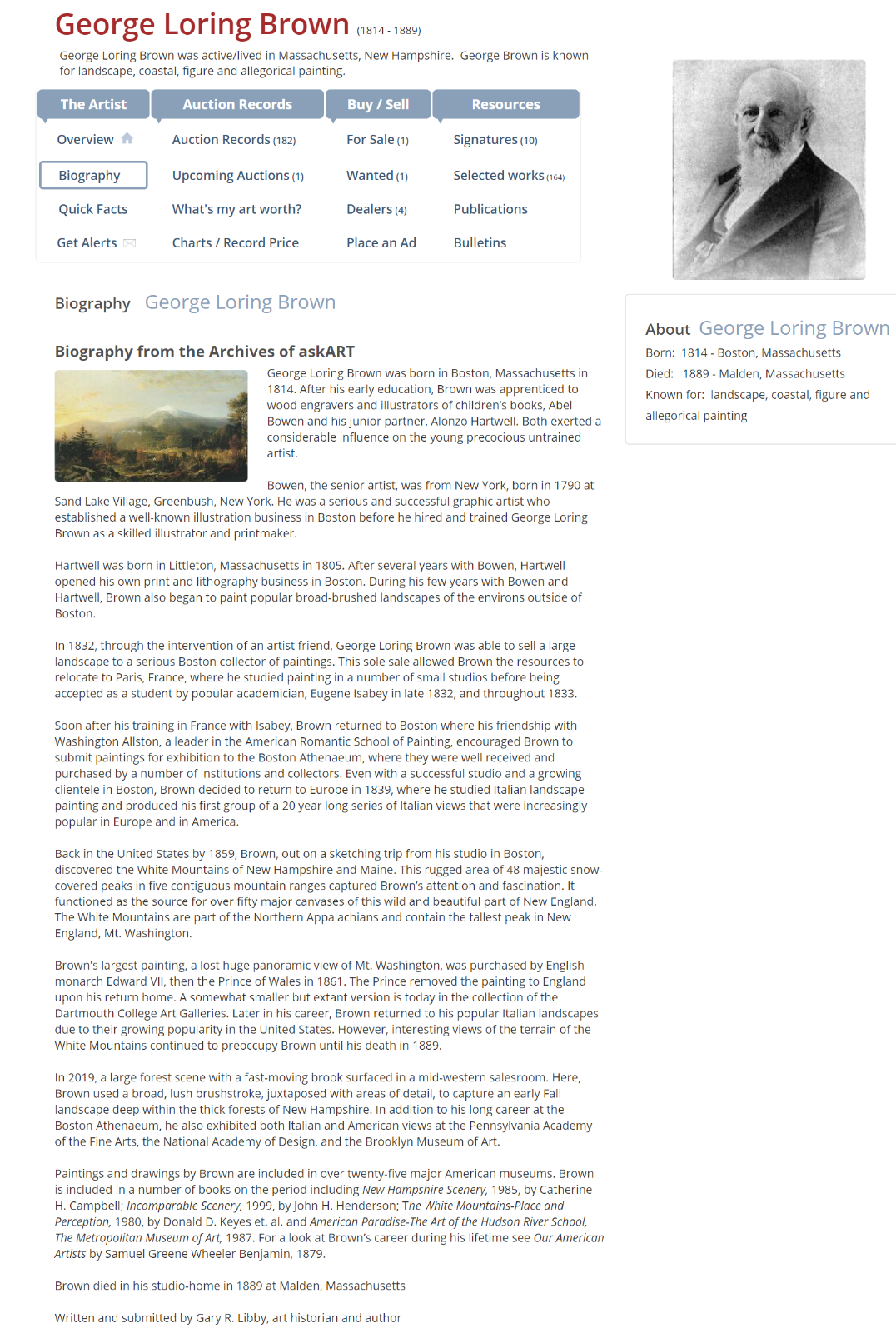Wondrous-Things.com (813) 409-4683
Mountain Wilderness Landscape Painting By George Loring Brown 1814-1889 Dated 1863
Mountain Wilderness Landscape Painting By George Loring Brown 1814-1889 Dated 1863
Couldn't load pickup availability
Mountain Wilderness Landscape Painting By George Loring Brown 1814-1889 Dated 1863
Important painting by renowned listed artist George Loring Brown.
G L Brown paintings have sold for as high as $400,000 at auction. see AskArt screen shot
WILDERNESS LANDSCAPE PAINTING WITH SNOW CAPPED MOUNTAINS SIGNED G.L. BROWN Dated 1863
Signature: The 1st signature image is of work. The 2nd (similar) signature is the known signature of George Loring Brown ( G. L. Brown) Source: Askart.com .
Oil/Canvas, 14" x 20", signed lower left, dated 1863, framed, 20" x 25".
Condition : Minor craquelure, relined, several scattered touches of in-paint
$99.99 US flat rate shipping plus insurance. Sorry, no international orders.
Biography of George Loring Brown
George Loring Brown was born in Boston, Massachusetts in 1814. After his early education, Brown was apprenticed to wood engravers and illustrators of children’s books, Abel Bowen and his junior partner, Alonzo Hartwell. Both exerted a considerable influence on the young precocious untrained artist.
Bowen, the senior artist, was from New York, born in 1790 at Sand Lake Village, Greenbush, New York. He was a serious and successful graphic artist who established a well-known illustration business in Boston before he hired and trained George Loring Brown as a skilled illustrator and printmaker.
Hartwell was born in Littleton, Massachusetts in 1805. After several years with Bowen, Hartwell opened his own print and lithography business in Boston. During his few years with Bowen and Hartwell, Brown also began to paint popular broad-brushed landscapes of the environs outside of Boston.
In 1832, through the intervention of an artist friend, George Loring Brown was able to sell a large landscape to a serious Boston collector of paintings. This sole sale allowed Brown the resources to relocate to Paris, France, where he studied painting in a number of small studios before being accepted as a student by popular academician, Eugene Isabey in late 1832, and throughout 1833.
Soon after his training in France with Isabey, Brown returned to Boston where his friendship with Washington Allston, a leader in the American Romantic School of Painting, encouraged Brown to submit paintings for exhibition to the Boston Athenaeum, where they were well received and purchased by a number of institutions and collectors. Even with a successful studio and a growing clientele in Boston, Brown decided to return to Europe in 1839, where he studied Italian landscape painting and produced his first group of a 20 year long series of Italian views that were increasingly popular in Europe and in America.
Back in the United States by 1859, Brown, out on a sketching trip from his studio in Boston, discovered the White Mountains of New Hampshire and Maine. This rugged area of 48 majestic snow-covered peaks in five contiguous mountain ranges captured Brown’s attention and fascination. It functioned as the source for over fifty major canvases of this wild and beautiful part of New England. The White Mountains are part of the Northern Appalachians and contain the tallest peak in New England, Mt. Washington.
Brown's largest painting, a lost huge panoramic view of Mt. Washington, was purchased by English monarch Edward VII, then the Prince of Wales in 1861. The Prince removed the painting to England upon his return home. A somewhat smaller but extant version is today in the collection of the Dartmouth College Art Galleries. Later in his career, Brown returned to his popular Italian landscapes due to their growing popularity in the United States. However, interesting views of the terrain of the White Mountains continued to preoccupy Brown until his death in 1889.
In 2019, a large forest scene with a fast-moving brook surfaced in a mid-western salesroom. Here, Brown used a broad, lush brushstroke, juxtaposed with areas of detail, to capture an early Fall landscape deep within the thick forests of New Hampshire. In addition to his long career at the Boston Athenaeum, he also exhibited both Italian and American views at the Pennsylvania Academy of the Fine Arts, the National Academy of Design, and the Brooklyn Museum of Art.
Paintings and drawings by Brown are included in over twenty-five major American museums. Brown is included in a number of books on the period including New Hampshire Scenery, 1985, by Catherine H. Campbell; Incomparable Scenery, 1999, by John H. Henderson; The White Mountains-Place and Perception, 1980, by Donald D. Keyes et. al. and American Paradise-The Art of the Hudson River School, The Metropolitan Museum of Art, 1987. For a look at Brown’s career during his lifetime see Our American Artists by Samuel Greene Wheeler Benjamin, 1879.
Brown died in his studio-home in 1889 at Malden, Massachusetts
Materials
Materials
Shipping & Returns
Shipping & Returns
Dimensions
Dimensions
Care Instructions
Care Instructions
